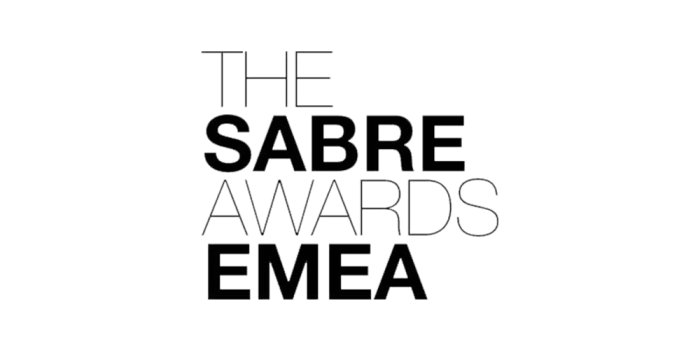
TEMPUR® sleep specialist highlights the benefits of napping.
Sleep deprivation is believed to cost the UK economy £37 billion a year in lost productivity, with poor sleepers having reduced reaction times and trouble concentrating (1), and yet the work time nap – a chance to recharge and recoup some of this lost verve – is still seen as something of a taboo. With the popularity of working from home showing no sign of slowing, the possibility of comfortably enjoying a work time nap has never been more real leaving us with the question – to nap or not to nap?
TEMPUR® sleep specialist & sleep counsellor, Thomas Høegh Reisenhus, says: “Far from rendering a person lazy, daytime naps can offer many benefits, including increased focus, alertness and providing a natural mood boost. And with the majority of British adults struggling to get the recommended seven to nine hours of sleep a night (2), it’s the perfect time to consider whether a work-time nap is for you.
“Whilst a healthy adult doesn’t necessarily need to nap, most people can benefit from a short 20-minute power nap to help them tackle the rest of their day feeling refreshed and refocused.”
Below, Thomas shares his complete guide to napping and makes a case for catching forty winks during the working day…
What happens when I nap?
Sleep unfolds in a series of stages that make up the sleep cycle. The difference between a nap vs a sleep period that lasts several hours, is which phases of sleep our body moves through.
Stage 1: the lightest and briefest stage of sleep, lasting between one and seven minutes.
Stage 2: lasts between 10 to 25 minutes, though is still considered a light phase of sleep. During this phase of sleep muscles relax and body functions slow.
Stage 3: A deeper, more restorative stage of sleep that usually lasts between 20 and 40 minutes. This stage of sleep is more difficult to wake up from.
Rapid eye movement (REM): The phase of sleep where dreaming tends to take place and where the body’s muscles are temporarily paralysed.
During a 10-30 minute nap, a person isn’t asleep long enough to enter the deeper sleep stages and will likely stay in stages 1 and 2.
What are the benefits of a work-time nap?
Aside from reducing fatigue, naps have been shown to improve alertness, focus and memory. They’ve also been proven to boost mood, increase positivity, creativity and tolerance for frustration – ideal for anyone in a busy working environment.
When should I consider a nap?
Naps aren’t just for children – if you’re experiencing fatigue or unexpected sleepiness that’s impacting your ability to focus at work, or are about to experience sleep loss (for example due to travel or shift work), it’s worth considering incorporating a nap into your daily routine.
Alternatively, if you’re experiencing insufficient sleep at nighttime, a nap may help to counteract daytime drowsiness.
When should I nap?
Research has found that napping in the early afternoon is most beneficial for improving cognitive performance (3).
It is advisable, though, to nap before 3pm, as any later may interfere with your ability to sleep come nighttime.
Where should I nap?
The ideal sleep environment is cool, dark and quiet – essentially like a cave. Understandably this is the complete opposite to most office environments, which are bright, busy and loud!
However, most offices do have dedicated quiet areas where, with the right kit, you can easily enjoy some shuteye. An eye mask and ear plugs are essential if you’re planning to take a nap in a less than ideal sleep environment as they help to reduce light and noise distractions, whilst a neck pillow will provide much needed comfort.
How long should I nap for?
A power nap is no longer than 30 minutes. Any longer and you’ll enter a deep phase of sleep and will experience sleep inertia – feeling groggy and disoriented after waking from a nap.
Some people enjoy a more specific type of power nap, referred to as a ‘caffeine nap’ – a lunchtime coffee followed by a 20-minute power nap. The stimulating effects of caffeine occur within 30-60 minutes of consumption, so that as you wake, the benefits of your earlier caffeine fix also starts to kick in, providing a double whammy of natural and caffeine induced benefits.
Whether you prefer a traditional power nap or a supercharged caffeine nap, just make sure to set an alarm so that you don’t risk oversleeping and to allow yourself ten minutes to re-group. Try splashing some cold water on your face or spending time in natural light, before resuming work.
For more information on TEMPUR®, visit www.tempur.co.uk
-Ends-
Notes to editors:
- (1) https://www.rand.org/randeurope/research/projects/the-value-of-the-sleep-economy.html
- (2) https://www.directlinegroup.co.uk/en/news/brand-news/2022/sleeping-dangerously–7-5-million-brits-have-under-five-hours
- (3) https://www.ncbi.nlm.nih.gov/pmc/articles/PMC8507757/
- For more information on TEMPUR®, visit www.tempur.co.uk
- Please contact us should you be interested in receiving product for review or for competition prizes
For further press information, please contact:
Anna Nyman | Elsa Findlay | Julie Aguilera
Rooster PR
T: +44 (0)203 440 8930
E: [email protected]
About TEMPUR®
TEMPUR® researches, develops, manufactures and distributes mattresses, pillows and other sleep products to improve the sleep experience worldwide.
TEMPUR® Material is the original pressure relieving mattress product made up of viscoelastic – billions of ultra-sensitive open cells that exist between a solid and a liquid state – TEMPUR® products provide the ultimate comfort and support, helping you to get a great night’s sleep night after night.
Born from NASA technology, TEMPUR® Material was originally developed in the early 1960’s, to use onboard the space shuttles. TEMPUR® scientists realised the enormous potential of this material and began experiments in the early 1980’s to perfect it for sleep. After millions of pounds in research, the technology was perfected into the TEMPUR® Material we know today. As a result, TEMPUR® was the only mattress and pillow brand recognised by NASA and certified by the Space Foundation in May 1988.
Each TEMPUR® product undergoes sixty-seven different quality checks, ensuring superior quality and durability.
TEMPUR® products can be purchased direct via the TEMPUR® UK website, Dreams, John Lewis, Bensons for Beds, and Furniture Village or from leading independent retailers or from any of 10 TEMPUR® brand and outlets stores.
TEMPUR® is a subsidiary of TEMPUR® Sealy International Inc.
Follow TEMPUR®:
- Twitter: @TempurUK
- Facebook: @TempurUK
- Instagram: @tempur_uk
- YouTube: https://www.youtube.com/user/TempurUKonTV






